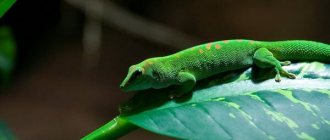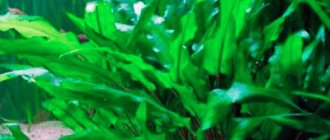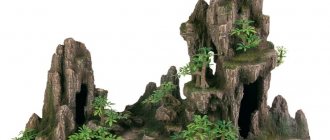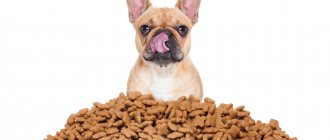For those who want to have an unusual pet at home, experts advise paying attention to the leopard gecko, leopard gecko. This lizard is suitable for both advanced reptile lovers and beginners. Caring for her is not difficult, and her character will not create problems: she is a peaceful and positive creature, easily attached to a person and capable of showing her love.
A leopard gecko would be a good pet for someone who loves reptiles.
Description of leopard gecko
Geckos of this species are bright and immediately attract the eye due to their unusual spotted coloring. In addition, they are quite large - an adult can reach up to a quarter of a meter in length, with the male usually larger than the female. The back of the lizard is gray, yellow or yellow-gray, the sides are pale, almost white. The entire upper part of the body is covered with dark spots of irregular shape.
This representative of the fauna attracts attention with its spotted bright coloring
Having just hatched from the egg, the leopard gecko looks a little different : its entire body is light gray and decorated with round black rings that extend to the tail. Some of this color is retained in some adult individuals: two or three transverse lilac rings can be seen on their tails.
Under natural conditions, geckos are nocturnal. They also live in captivity, so a potential owner should not expect the pet to be active during the day.
The lifespan of an animal in nature is up to 10 years for a male and up to 8 years for a single female. If a female individual actively reproduces and is sexually active, then she will live even less - 3-4 years. At home, these geckos can live much longer - up to 20 years.
Description of the skink gecko
This is a medium-sized lizard: its body length is on average 10-11 cm, rarely up to 15 cm, weight does not exceed 24 grams. The body is short, slightly flattened above. The scales are large, tiled, and the scales covering the body are many times larger than the scales on the upper surface of the head. The ventral scales are approximately the same in size as the dorsal ones. On the upper surface of the tail there is a longitudinal row of large nail-like plates superimposed on each other. The scales of the body, especially the abdominal ones, and the nail plates of the tail are very delicate, and it seems as if they were made of paraffin. The tail breaks easily and grows back quickly.
The skink gecko's head is large and wide. The eyes are disproportionately large, the eyelids do not close, the pupil is vertical.
The gecko's eyes in daylight are dark and deep; At night in the desert, by the light of a lantern, they glow with ruby or golden-green fire.
The general background of the upper side of the body is yellowish or pale green, along it there is a complex pattern of blurry spots and stripes of brown color. A dark line runs along the sides, which is better expressed in adults. The gecko is white below, the throat is sometimes yellow, and the sides of the abdomen are slightly purple. The top and sides of the head are approximately the same color as the back, with brown stripes and spots.
Habitats
The skink gecko lives in the sandy deserts of Central Asia and Southern Kazakhstan, giving preference to sand dunes and fixed sands. Less common in tykars and areas of clay plains.
Species and habitats
Scientists know several species of leopard geckos, which differ in appearance and live in different places. Here are the most popular ones:
- The Iranian leopard gecko (Eublepharis angramainyu) is an inhabitant of Iran, Iraq, Turkey and Syria. Its dimensions are quite modest - no more than 14.7 cm from the nose to the base of the tail. The head reaches 3.9 cm in length and 3.2 cm in width, and the tail is approximately 10 cm long.
There are several varieties of geckos, differing in habitat and color.
- The Turkmen leopard gecko (Eublepharis turcmenicus) lives in northern Iran, the central and western mountains of Turkmenistan and the Turkmen-Khorasan mountains. It is even more miniature: its body length is up to 14.5 cm, and its tail is up to 9.4 cm. The male is usually much larger than the female. The maximum weight of a gecko is 65 g. Distinctive features of this species: a thickening of the tail in the middle and a large head, clearly separated from the body.
- The East Indian leopard gecko or Hardwick's gecko (Eublepharis hardwickii) lives in Eastern India, Bangladesh, and West Bengal. This is a large species, growing up to 23 cm in length. It has short legs and small fingers, and its body is dense and strong. The holes in the ears are large and oval in shape.
- West Indian leopard gecko (Eublepharis fuscus) - found mainly in Western India and south-eastern Pakistan. Its head and paws are covered with flat scales, and a characteristic spotted pattern can be seen on its back. This type of gecko is one of the most popular among reptile lovers.
The most popular among gecko breeders is the West Indian leopard gecko.
- Eublepharis satpuraensis is a new, recently discovered species of gecko endemic to some states of India and the Satpura hill zone. It is medium in size - an adult does not exceed 13 cm in length. You can distinguish it from others by three stripes of light shades running from the back of the head to the tail.
However, the most famous among terrarium enthusiasts remains the species Eublepharis macularius - the largest and best adapted for life in captivity.
Contents in a terrarium
A terrarium measuring 40 cm in length, width and height is best suited for one spotted leopard gecko. For a pair of geckos, it is worth increasing the length to 60 cm, but if there are more of them - from 3 to 7 - it is better to buy an even longer terrarium, up to 100 cm. Height is not as significant for them as the ground area, so you can reduce it to 35 cm .
The leopard gecko terrarium needs to be kept at a fairly warm temperature.
The walls of the terrarium should be glass and not plastic, as the lizard will scratch them with its paws and over time many scratches will appear on it. The gecko's home must have high-quality ventilation and good ultraviolet lighting.
The ideal temperature for this species of animal is from 27 to 31 degrees Celsius. Since they are tropical inhabitants, it is difficult for them to survive in cold temperatures below 24 degrees. To maintain a suitable climate, you can place an infrared lamp or some heated decorative element in the terrarium.
The humidity level should be between 40 and 55%. These parameters can be achieved by placing a wide drinker in the terrarium or spraying the soil.
At the bottom it is best to place fairly large stones or a mat that imitates grass. Other types of soil can be dangerous for the gecko: it can swallow small stones, and sand can get into the lungs or digestive system.
The terrarium must be equipped so that the gecko has somewhere to hide while sleeping and where to climb while awake.
In addition, even at home, a leopard gecko will remain awake at night, which means that during the day it needs to hide somewhere. Therefore, we need to install a house for him, which can be made from driftwood, stones, and bamboo tubes.
These lizards love to climb on stones or snags and bask on them in hot weather, so you need to arrange the terrarium taking into account these preferences. It is best to leave the bark on the snag, since due to the structure of the legs, these animals find it difficult to climb on smooth surfaces. Before installation, you need to scald it with boiling water and treat it with potassium permanganate to avoid infection.
Cleaning will not present much trouble, since leopard geckos are clean and arrange a toilet for themselves in one of the corners of the terrarium. It will be enough to remove the dirty stones and replace them with clean ones.
LEOPARD GECCO. CARE AND MAINTENANCE
Contents hide
When looking for a pet, many people are increasingly choosing reptiles. Some species turned out to be quite adapted to keeping at home, do not require large expenses and, moreover, are not poisonous. The latter circumstance is often decisive when purchasing a reptile if there are small children in the family. Therefore, it is quite possible to recommend the leopard gecko. We bring to your attention a review article describing the features of its content.
Another name for this nimble little lizard is the spotted leopard gecko (Eublepharis macularius). It can be presented in many color options (usually white, yellow, with spots on the sides). Some young lizards may appear striped; as they mature, the stripes transform into spots. There are actually many more color options, and sometimes you come across individuals with the most bizarre colors and patterns (one of them is called “jungle”). It is no exaggeration to say that geckos can display all the colors of the rainbow. The gecko can be safely recommended even to beginners. Life expectancy is 20 years or more. An adult lizard grows in length from 20 to 25 cm (including tail). It should also be noted that an animal with an intricate coloration can cost an order of magnitude more than a “normally” colored lizard.
Behavior and temperament. As a rule, geckos are nocturnal. They are tamed quite easily and are known as docile animals. Unlike other geckos, our lizards do not have sticky pads on the tips of their feet, so they cannot climb walls. Another distinguishing feature is that the leopard gecko's eyes have eyelids.
How to choose the right housing. An aquarium with a capacity of approximately 80-90 liters may be quite suitable for housing several geckos, but it is still preferable to take one to start with - a male. Two males may not get along well; If you take a male and a female at once, think about what you will do with the offspring. It is necessary to place commercially available climbing devices in the aquarium, and also provide small “caves” - grottoes for shelter. Cardboard boxes can also work. A simple plastic container with a hole and a lid will do. The place where your pet will live should be humid: the floor should be covered with moistened soil or moss. If you need to save money, then you can take an old fish aquarium that can no longer hold water. Not suitable for fish, but perfect for our case.
What should never be used to cover an aquarium is sand, including calcium sand. Geckos suffer from intestinal obstruction, and they can easily swallow sand, which will lead to dire consequences. Paper absorbent has proven itself well - it is very easy to replace and convenient to use. Chip and wood fillers, on the contrary, are not suitable - the essential oils contained in wood can irritate your pet, and the threat of injury is also quite real. At the very least, before you feed your gecko, make sure it won't swallow anything other than food. Many people even get an additional completely empty container and use it as a dining room.
Lighting, temperature and humidity. Being nocturnal animals by nature, geckos do not require the installation of an additional UV lamp. An ordinary incandescent lamp with a white spectrum of light is suitable as the main lighting during the day, and the heat from this lamp is quite enough to ensure normal temperature conditions. Incandescent lamps with red and blue-violet glow, as well as a ceramic heat emitter can be used as additional night sources of light and heat. You can use floor heaters, but you need to do this with extreme caution - you can easily fry your pet. And never use so-called “hot stones”.
During the day, maintain temperature ranges from 24 to 31 degrees Celsius, at night - 21-24 degrees Celsius. Avoid large temperature changes, keep your pet away from drafts, and do not place the aquarium near windows or doors.
Maintaining a certain constant level of humidity is not required, however, if the aquarium is completely dry (relative humidity 20% or lower), the animal may begin to shed. Just try to keep it moist.
Water for your pet. There should always be a saucer with fresh water in the aquarium. Having water available will also help keep your gecko's home hydrated. You can also see a picture of lizards swimming in the water - a funny sight.
Diet. Leopard geckos are insectivores and will gratefully accept grasshoppers, mealworms, wax moth larvae, etc. Before “serving”, it is good to roll the insects in a food supplement - calcium D3, especially vitamins should be added to the diet of young lizards. Important: “young animals” should be fed daily, but adult lizards can easily go without food for up to several days.
Original publication: Leopard Geckos. Author: Lianne McLeod. Source and photo:
Feeding the gecko
Like other lizards, leopard geckos in nature feed on live food and catch it on their own. Therefore, in captivity it is worth giving him similar food. The following insects are best suited:
- various types of crickets: banana, brownie, two-spotted;
- Turkmen and marbled cockroaches;
- larvae of Madagascar cockroaches;
- mealworm;
- grasshoppers and locusts.
The gecko's main food is live insects: cockroaches, worms, grasshoppers, etc.
To improve your pet's health, it is advisable to feed the insects grass before giving them to your gecko. You can also sprinkle them with calcium powder and vitamins.
Unsuitable food for these animals are fruits, berries, and vegetables. They do not feed on vegetation, preferring insects. Some species also eat larger prey: the cubs of other lizards, small newborn mice. You can feed them such food, but the basis of the diet should still be insects.
It is better to feed the gecko by hand or with tweezers. This way you can make sure that cockroaches or crickets have been eaten and will not breed in the owner’s apartment, and that the lizard has not swallowed the stone along with its food. In addition, this method helps to accustom the leopard gecko to its owner.
The gecko needs food infrequently - 2-3 times a week. At the same time, he can eat up to five crickets at a time.
Young individuals require a different approach to feeding:
- at the age of up to 1 month - 1 cricket 1-2 times a day;
- from 1 to 3 months - 2 crickets once a day;
- from 3 to 6 months - up to 3 crickets every 2 days;
- from 6 to 12 months - 3-4 crickets 2-3 times a week.
There are some differences in feeding baby geckos and adult geckos, but they all need clean, fresh water.
In addition to food, the gecko constantly needs water, so you need to make sure that the drinking bowl is always filled. Its contents need to be changed at least once every two days.
MADAGASCAR GROUND GECCO (PAROEDURA PICTA)
MADAGASCAR GROUND GECCO (PAROEDURA PICTA) Description Oddly enough, this cute, big-eyed gecko is not often found in collections. Perhaps the reason for this is its not very colorful color, or not the most impressive size (up to 14 cm). Although if we talk about the size, then this is rather a plus for home maintenance.
However, the fact remains that finding and buying this baby is not so easy. The color is a combination of beige-brown-yellow tones intertwined in a variety of fancy patterns. The head is large, with expressive gecko eyes. The body in proportion to the head is not very large, cylindrical. The tail reaches the length of the body.
Males are usually larger than females; as adults they can be easily distinguished from females by their anal tubercles. In nature
Endemic (found only in this territory) of the island of Madagascar. It inhabits quite a variety of biotopes, but is more often found in the south of the island and prefers drier places such as semi-deserts, savannas, rocks, and dry forests. The animal is nocturnal and hides in various shelters during the day.
Home maintenance
At home, they can be kept in small terrariums, ranging in size from 25x25x25 cm. Area is more important than height. It is recommended to keep these geckos in pairs, but there is a certain subtlety here, which will be discussed below in the breeding section.
The terrarium must be equipped with shelters so that the animal can hide at any time. Otherwise, decoration remains a matter of taste. Heating - Madagascar ground geckos love warmth, so a warming point is always installed in their home, which heats up to a temperature of 29-32 degrees during the day. In an unheated corner, the temperature should be maintained in the range of 26-28 degrees. At night, heating is not needed unless the temperature drops below 24 degrees Celsius. Substrate - peat, sphagnum, coconut substrate and even just napkins. Humidification - part of the substrate should be regularly sprayed to maintain the required humidity. The terrarium must have a drinking bowl with fresh, clean water. Feeding: feeding insects (roaches, crickets, mealworms, etc.). Young geckos need to be fed once a day, adults 4-5 times a week. Feeding should be as varied as possible. MANDATORY - there must be a bowl with calcium in the terrarium so that the animal can, if desired, lick it and make up for the deficiency. For the same purpose, you can “pollinate insects” with a vitamin-calcium mixture.
Reproduction
Breeding does not present any difficulties. Males are sexually mature at six months, females somewhat later. When kept together, the female lays the first pair of eggs in two weeks and then you will regularly get another pair of eggs from the terrarium every 9-15 days. This can continue for up to six months. And here the nuance from which was mentioned above appears. With such exhausting reproduction, cases of exhaustion and death of females are not uncommon. Therefore, at the first signs of a deterioration in the animals’ well-being, they should be seated, but if the clutches do not stop, after that the female must be transferred to a “mild” wintering with a temperature of 18-20 degrees.
Incubation of eggs takes place at a temperature of 27-29 degrees, about 2 months. Humidity during incubation is 60-70%.
A short summary
The Madagascar ground gecko is not a difficult gecko at all for both beginner terrarium keepers and seasoned collectors. Its small size allows it to be kept in small terrariums, which is sometimes essential in city apartments. The only point you should pay attention to when getting this pet is varied feeding and vitamin-calcium supplements. As a consequence of this point, you need to monitor the condition of the female during reproduction.
Otherwise, this sweetest animal can bring a lot of joy to your home!
Features of behavior
Although the spotted leopard gecko is a peaceful creature, it can still behave aggressively in some situations. It is impossible to keep several males together, as they will definitely start fighting to divide the territory. In this case, one or more of them may be seriously injured or even killed. Their territoriality can turn even such cute creatures into killers of their own kind, so it’s better not to take risks.
It is best to place in the aquarium either one individual of either sex, or a pair of opposite sexes. If you want to have three or more leopard geckos, you can buy a male and several females. Such a neighborhood is even more preferable for loving males: one female simply cannot tolerate such frequent contacts.
The best option is to place one male and several female leopard geckos in one terrarium.
In the right conditions, the lizard will behave peacefully, fully consistent with its positive appearance: when you look at it for the first time, you may get the impression that it is smiling all the time. Usually this feeling is true; if the leopard gecko is comfortable with its owner, it can become very accustomed to it and show affection. Some specimens even begin to fawn and “ask to be held.”
This pet is well suited for families with small children, whom it does not injure in any way. It does not cause allergies and does not bite, so it is not dangerous to humans. He also has no other methods of attack.
The only problem that may arise is a nocturnal lifestyle, which does not always suit the owners. But some individuals get used to coexisting with humans and begin to stay awake during the day, often delighting their owners with their activity. If the gecko has not switched to a diurnal lifestyle, it is better not to disturb it and observe it during its natural waking hours.
Lizard Breeding
Female spotted geckos reach sexual maturity at the age of one and a half years, and males at six months. Before mating, it is best to place the female in a separate terrarium for several days. Then, when she returns to the male, she will be better prepared for mating.
Under no circumstances should a male be transferred to another terrarium : he will feel uncomfortable on foreign territory.
If, after reunification, the male aggressively attacks the female, you need to put her away for some more time. A sign of readiness for mating on his part can be called clicking and vibrating of the tail.
After mating, it is best to place the female again in another terrarium. The first gestation of eggs in life lasts about one and a half months. Before laying them, the lizard stops eating and begins to dig a hole in the ground.
For eggs, it is advisable to place a special container with wet coconut shavings, where the eggs will feel comfortable.
If you follow all the instructions, you can even plan the sex of your offspring.
The rate of maturation of embryos and their sex depend on the temperature in the terrarium:
- at 30 degrees, lizards will be born in 45 days and will be male;
- at 27 degrees this period will last up to 70 days, and half of the brood will be females.
After mating, the female lays up to four pairs of eggs per season. For the second and subsequent clutches she no longer needs a male.
If the female feels unwell during pregnancy, then it is worth increasing the calcium content in her diet. In special cases, you can lower the temperature to 20 degrees, simulating wintering and stopping reproduction.
Lifestyle
Skink geckos lead a terrestrial lifestyle. They become animated and go out hunting at dusk, spending the day in deep burrows that they dig in a sandy ridge or on the slope of a dune. Sometimes they use the burrows of other animals - gerbils or jerboas. Burrows are used both for daytime rest and for wintering; here in one of their “rooms” the female lays eggs.
Geckos hunt under the cover of darkness, without moving far from their burrow. They feed on various beetles, orthoptera, tree bugs, cicadas, mantises, dipterans, hymenoptera, caterpillars, etc. Excellent sense of smell and vision contribute to successful hunting.
Our heroes differ from other lizards in their manner of movement - they do not crawl, but walk, while five-fingered footprints - stars - remain in the sand. If necessary, they can move quite quickly: they run along the sand on outstretched legs, carrying their body high and stretching out their tail. The tail is often carried upward but remains straight.
Skink geckos emit a soft squeak and dry cracking of tail scales, which serves as a danger signal.
Each animal has its own individual territory, the boundaries of which are jealously guarded from the invasion of relatives. Only during the mating season, males travel relatively long distances in search of brides - up to 300 meters. At this time, fights often occur between them.
The peak of the mating season occurs at the end of April - mid-May, and around the beginning of June, females lay 1-2 eggs. Incubation of the eggs lasts about 60 days, after which babies 6-7 cm long are born. The very next day they begin to hunt small insects. Geckos grow quite quickly and become sexually mature at the age of two years.
Skink geckos go to winter in October-November, and wake up and come to the surface in March. Geckos molt several times during the season, but mass molting occurs in May.
Rules for choosing when purchasing
When purchasing a leopard gecko, it is important to ensure its health. To do this you need to carefully examine it to check whether it meets the following criteria:
- Juveniles and adults should have a thick, long, powerful tail. It is there that the lizard stores all the nutrients accumulated by the body. If the tail is not thick and long enough, this means that the animal’s nutrition was poor, and the previous owner did not take good care of it. This does not apply to small, newly hatched geckos that are actively growing.
When choosing a pet, you should be very attentive to details and appearance.
- Gender can only be determined at the age of six months. Therefore, the second and subsequent geckos should be purchased no earlier than this period, so as not to place several males in one terrarium.
- The abdomen should be fairly thick, but not bloated, otherwise illness or pregnancy may be suspected. Hanging sides indicate obesity.
- The lizard's behavior should be energetic - not apathetic and lethargic. She should not wobble when walking.
- There should be no minor abrasions or scratches on the surface of the skin. Their presence indicates that the owner kept several males together.
It is worth remembering that a gecko acquired young may subsequently change its color. Therefore, if the appearance of the leopard gecko is important, it is better to buy an adult.











